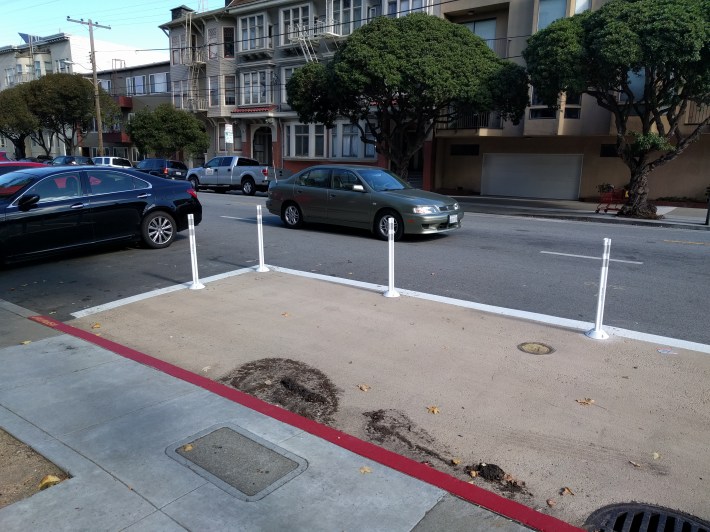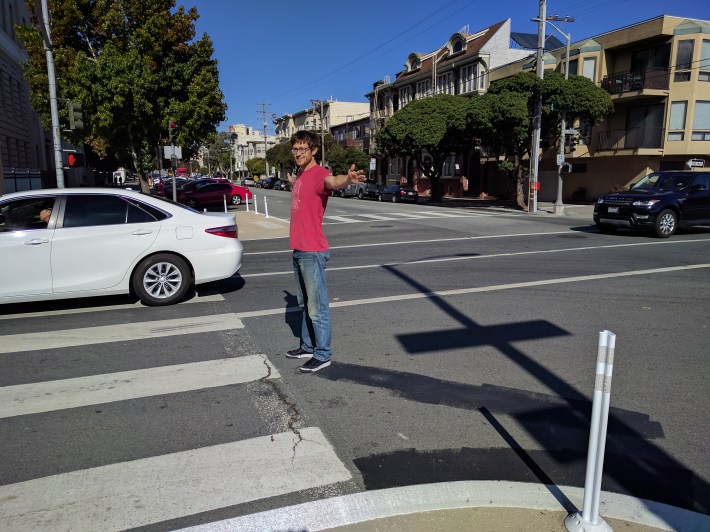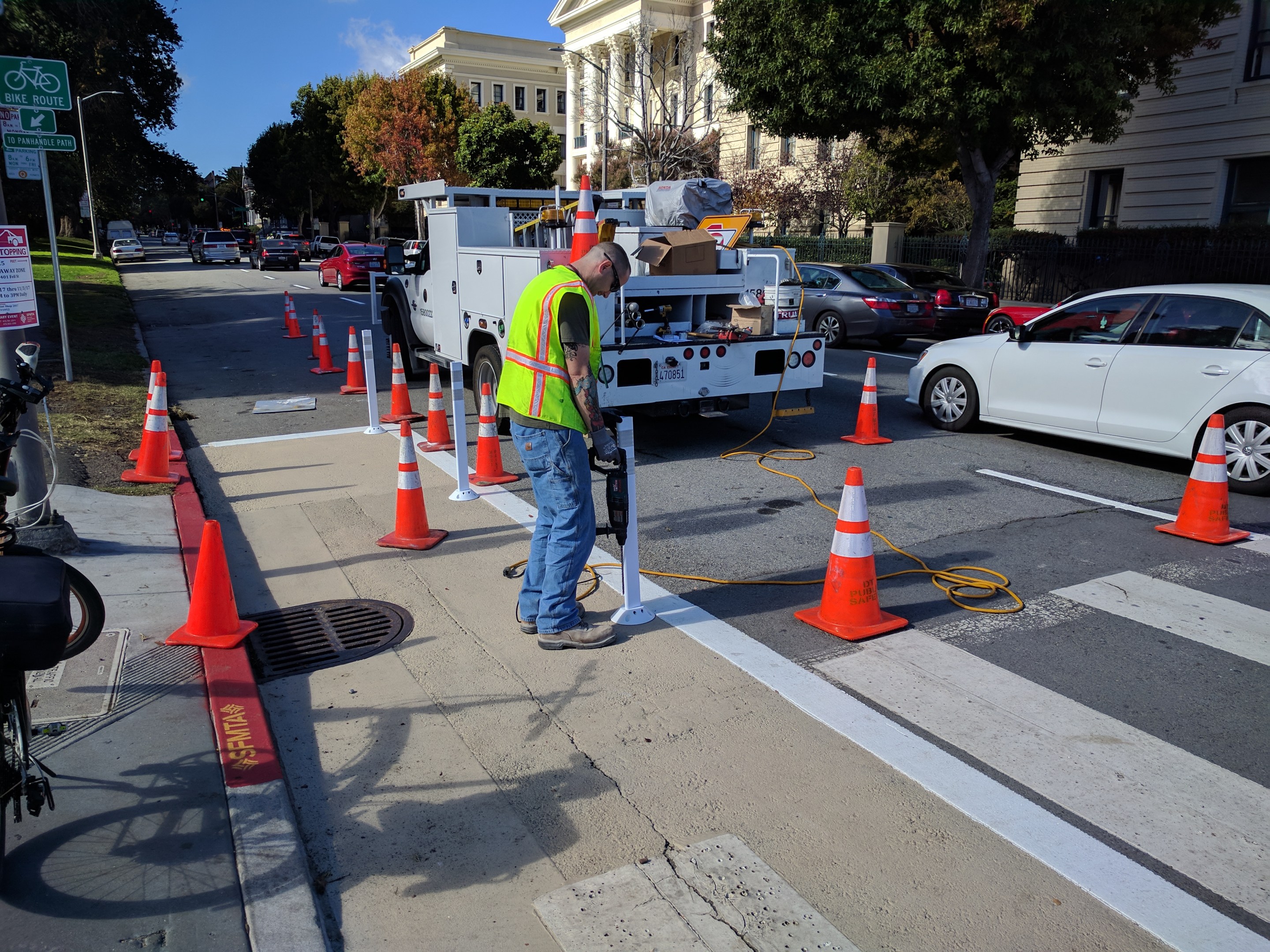Note: GJEL Accident Attorneys regularly sponsors coverage on Streetsblog San Francisco and Streetsblog California. Unless noted in the story, GJEL Accident Attorneys is not consulted for the content or editorial direction of the sponsored content.
An SFMTA crew installed official safe hit posts today to make the intersection at Baker and Fell safer. The posts compliment painted bulbouts that went in over the weekend. This is the location where 90-year-old David Grinberg was killed last month while crossing the street.
"Following this incident, SFMTA staff reviewed the intersection. This review included an analysis of what we knew about the circumstances surrounding the fatal collision, the history of traffic collisions at this location, and the existing conditions of the intersection," said Ben Jose, a spokesman for the agency. "As a result, we recently installed painted safety zones on the northwest and southwest corners to improve pedestrian safety, especially for the senior residents at Mercy Terrace who deserve to be able to safely cross the street."

"Additionally, we installed an advance stop bar on Fell Street for drivers approaching the intersection and the crosswalk. This will help prevent drivers from encroaching into the crosswalk at a red light," added Jose. "We have found that painted safety zones create more distance between turning vehicles and pedestrians waiting on the sidewalk, encourage vehicles to turn more slowly, and maintain good visibility between drivers and people stepping into the crosswalk."
It's still unclear why the agency found it necessary to remove the safe hit posts put in a few weeks ago by the vigilante safety group, SFMTrA until they were ready to put in this treatment--especially considering that they've now installed essentially a neater version of the same thing they tore out.
And Matt Brezina, who helped organize the people-protected bike lane protests on Valencia, in the Tenderloin, and most recently on the Embarcadero, said he was concerned that the safe hit posts and bulbout were not extended far enough. The left most lane on that section of Fell is reserved for bikes on the eastern side of the intersection, so the posts and bulbout could be extended one additional lane. He stood in the street to demonstrate how far out the bulbout and additional post could actually go to shorten the crossing distance for seniors, with no effect on traffic.

That said, Brezina, who owns a radar gun and was checking traffic speeds, said the new bulbouts seem to do a better job getting cars to drive at the limit. "The 30 mph limit is too fast, but cars are much more likely to drive the current speed limit with these bulbouts in place."
Streetsblog has to wonder why we can't get more robust treatments that could be installed quickly as well, such as planters and concrete blocks that, yes, could damage a car if a motorist is drunk or texting, but would give physical protection for crossing pedestrians. Safe hit posts, while better than nothing, are, after all, really just visual markers.
There's also the question of the crossing countdown timers that still only start at 12 seconds--hardly enough time for a senior citizen, especially one with a walker, to get across.
That said, it's great to see the city responding to this dangerous situation; we hope in the future to see a pro-active and immediate response any time a dangerous condition is identified.






